Crochet Temperature Blanket – With a Twist!
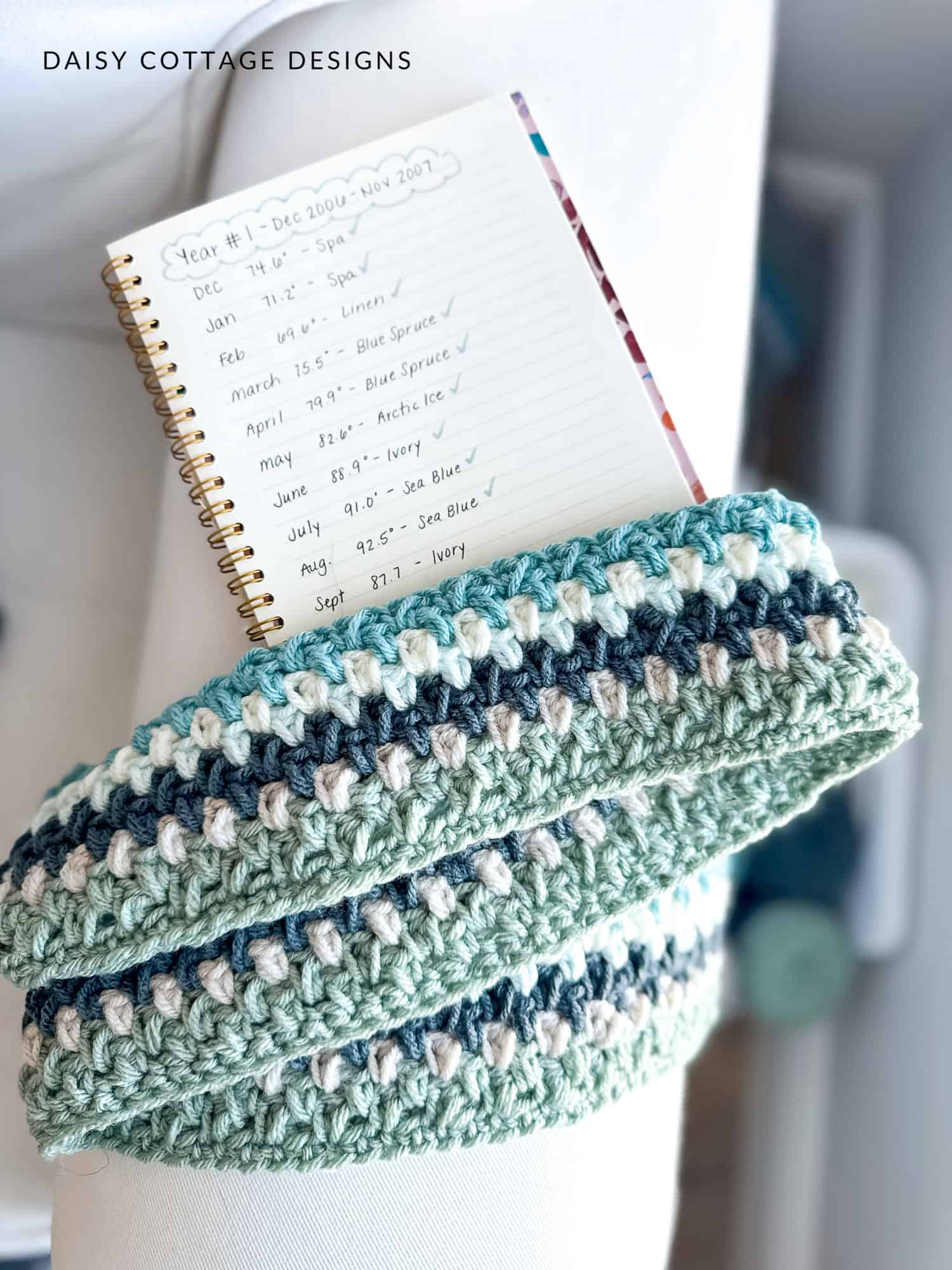
Even though I’ve been crocheting for the last 14 years or so, I’ve never made a temperature blanket. I’ve spent plenty of time pondering the idea, but something about it has always felt daunting to me.
If you don’t care about the nitty gritty and you just want the pattern info, you can jump to the pattern information!
2025 is my year! I have plans to update this post with my progress, but I’ll make no promises. Just know I have the best intentions. Jump to the most recent update.
I shared my idea and some photos on Instagram, and had so many questions about this temperature project, that I decided to write a blog post with all the details.
What’s a Crochet Temperature Blanket?
Maybe you’re wondering what a crochet temperature blanket is. It’s a fun project where you crochet a row every day to reflect the temperature. Each color represents a different temperature range, creating a colorful record of the year’s weather.
Temperature blankets used to be “all the rage” in the crochet world. Although they lost popularity for a while, they’ve made a comeback over the past few years.
It’s OK to Think Outside the Box!
I knew that crocheting a blanket featuring the daily high wasn’t going to work for me this year.
My husband and I just celebrated our 18th anniversary, so I decided to make a temperature blanket featuring the monthly averages for the 216 months we’ve been married.
In the future, I’d like to do a temperature blanket for each of our daughter’s birth years.
There are so many options for Temperature Blankets! Some people even use a different stitch on days when it rains. The possibilities are endless!
Where Can You Find Historical Weather Data
Finding the daily temperature is pretty easy – most of us probably have an app on our phone. It’s a little more difficult to find historical data.
I used the National Weather Service website to find the information I needed for my blanket. I decided to do the average high temperatures for each month. Thankfully, the calculations were done for me.
While I think the projects that use traditional temperature blanket colors (red for hot, blue for cold, etc) are beautiful, I wanted to use colors that go with the decor in my home.
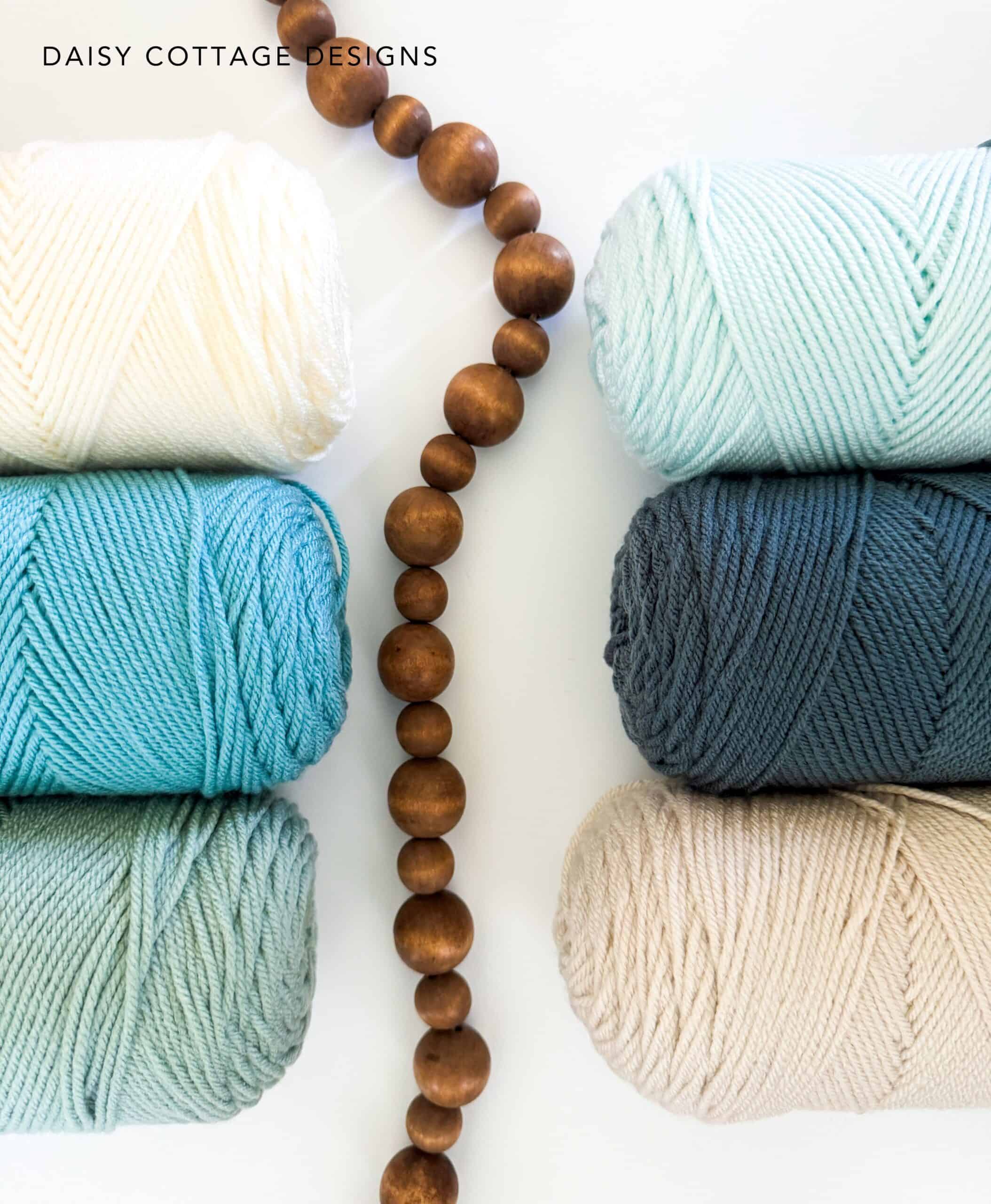
I chose 6 shades of Hobby Lobby ILTY. I purchased 2 skeins of each color.
- 60-69˚ – Linen
- 70-74˚ – Spa
- 75-79˚ – Blue Spruce
- 80-84˚ – Arctic Ice (I know, I know… the name doesn’t match the temp range)
- 85-89˚ – Ivory
- 90˚+ – Sea Blue
If you live in an area with more temperature variation, you’ll likely need to add a few more colors and temperature ranges to your blanket.
What’s a Good Stitch for a Temperature Blanket?
Many temperature blankets use the Moss Stitch. It’s a shorter stitch that works up beautifully so it makes sense!
Since my blanket will only be 216 rows, I have a little bit more wiggle room with the stitch. When you’re making a blanket that’s 365/366 rows long, it’s better to stick with a shorter stitch like a variation of the single crochet or moss stitch… unless you want an ENORMOUS blanket.
After going back and forth, I finally settled on the mini bean stitch. The mini bean stitch is fun to work, and it goes quickly.
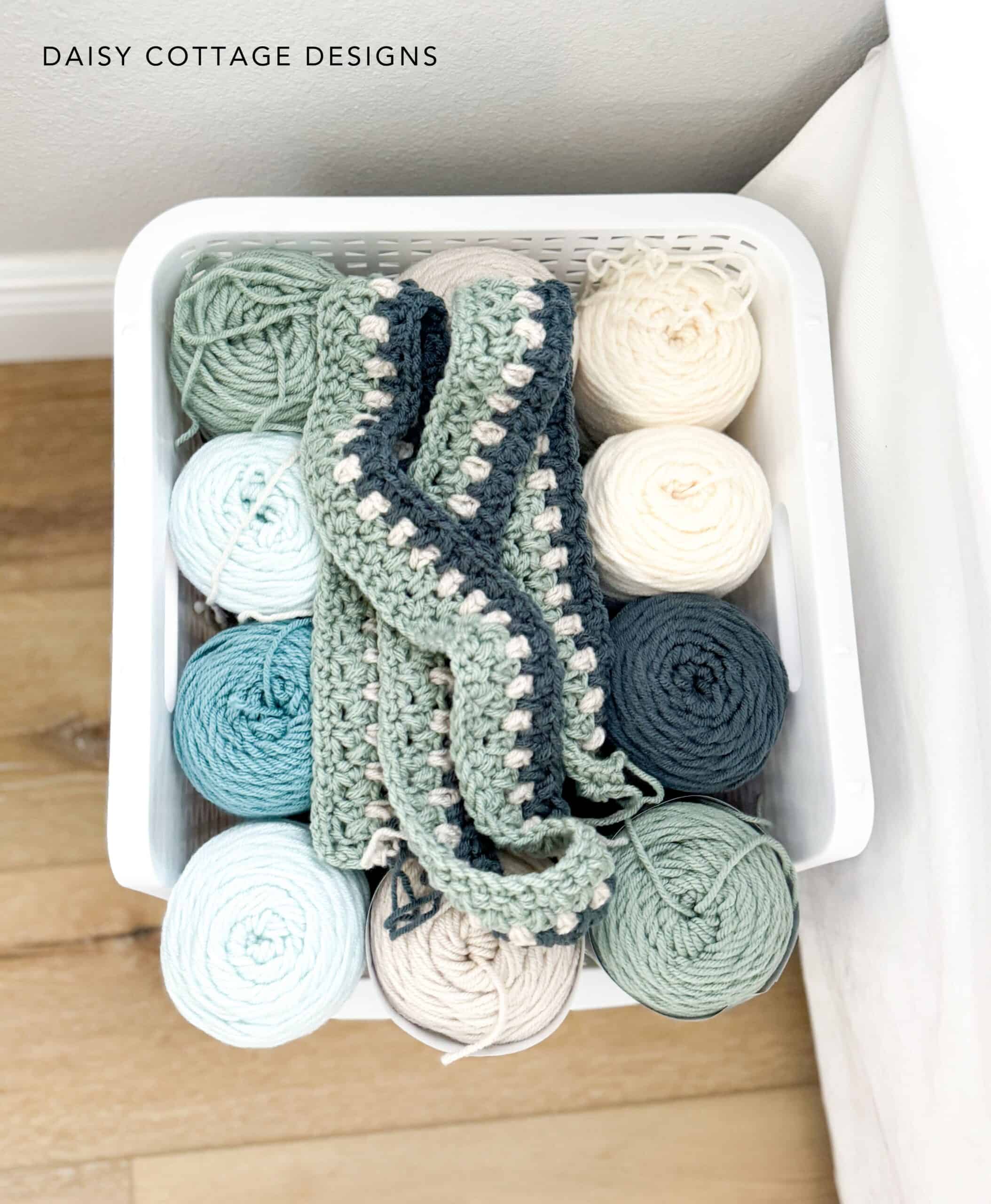
My Temperature Blanket Pattern (it’s more like a plan)
Typically, I give lots of precise details for my crochet blanket patterns. But, since I haven’t completed this pattern, it’s not as easy to do for this project. But, I do want to provide you with the information that you would need to make a similar project.
Notes:
- I’m using worsted weight yarn, but if you’re worried about your blanket getting too big, you could go down to a DK or sportweight yarn.
- Because I wanted a project with lots of drape, I am using an L crochet hook. I crochet tightly, though, so I’d recommend a K for the average crocheter.
- It is hard to tell you how much yarn you need to buy of each color since there is so much variation in the climates around the country. I decided to purchase 2 skeins of each color to get me started.
- I’m expecting to use about 3500 yards of yarn for this project.
Special Stitch:
- Mini Bean Cluster on Row 2: Insert hook into the stitch, pull up a loop. Yarn over, insert hook into same stitch, pull up a loop. There will be four loops on your hook. Pull through all 4 loops on your hook.
- Mini Bean Cluster on subsequent rows: Insert hook into the ch 1 space, pull up a loop. Yarn over, insert hook into the same ch 1 space, pull up a loop. There will be four loops on your hook. Pull through all 4 loops on your hook.
While this video is for a different project, it will walk you through how to make the stitch.
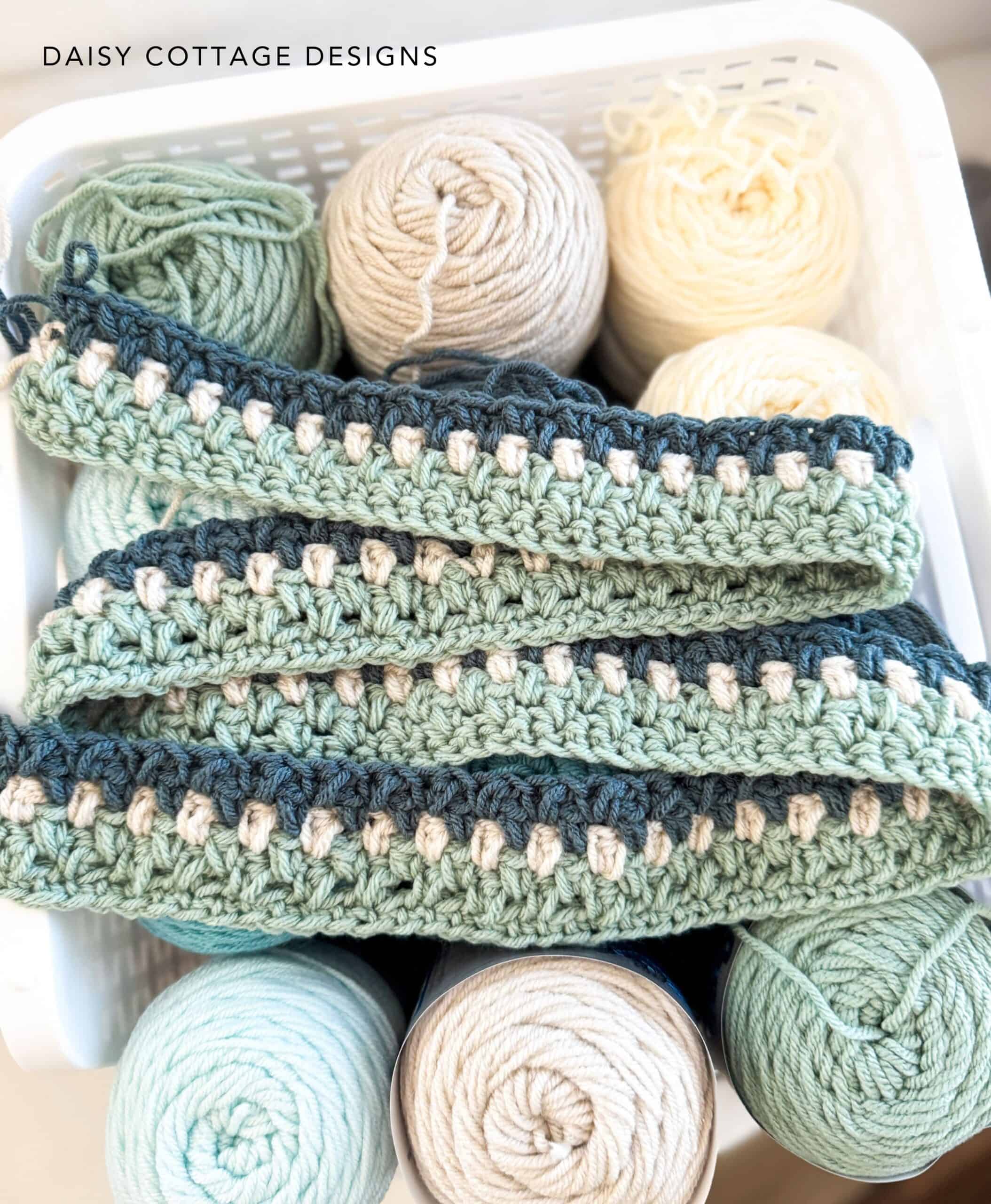
How I’m Making My Temperature Blanket
Using the yarn and hook of your choice, chain an odd number until you reach the width you want.
Remember, while this video is for a different project, it will walk you through how to make the stitch.
I started with a chain of 147.
Row 1: sc in the second stitch and in each stitch across. (You will have an even number of single crochet stitches at the end of this row). Ch 2, turn.
Row 2: mini bean cluster in the second stitch. *ch 1, skip a stitch, mini bean cluster in the next stitch* across ending with a mini bean cluster in the last sc. Ch 2, turn.
Row 3: *mini bean cluster, ch 1* in each ch 1 space across. Work your final mini bean cluster around the ch 2 at the end of the row (insert your hook under the ch 2). Ch 2, turn.
I’ll be repeating row 3 for a total of 216 rows.
Though I don’t know the exact measurements of my finished blanket (since I haven’t finished it yet), I’m estimating that it will be approximately 50×70 inches.
Huge? Yes. Cozy? Yes!

What About All Those Ends?
Worried about weaving all those ends? To be honest, so am I. I’ve seen some people leave a fringe on their temperature blankets.
My current plan is to weave the ends after I complete each year (so every 12 rows).
Are you making a temperature blanket this year? Have you made one before?
Late January Update
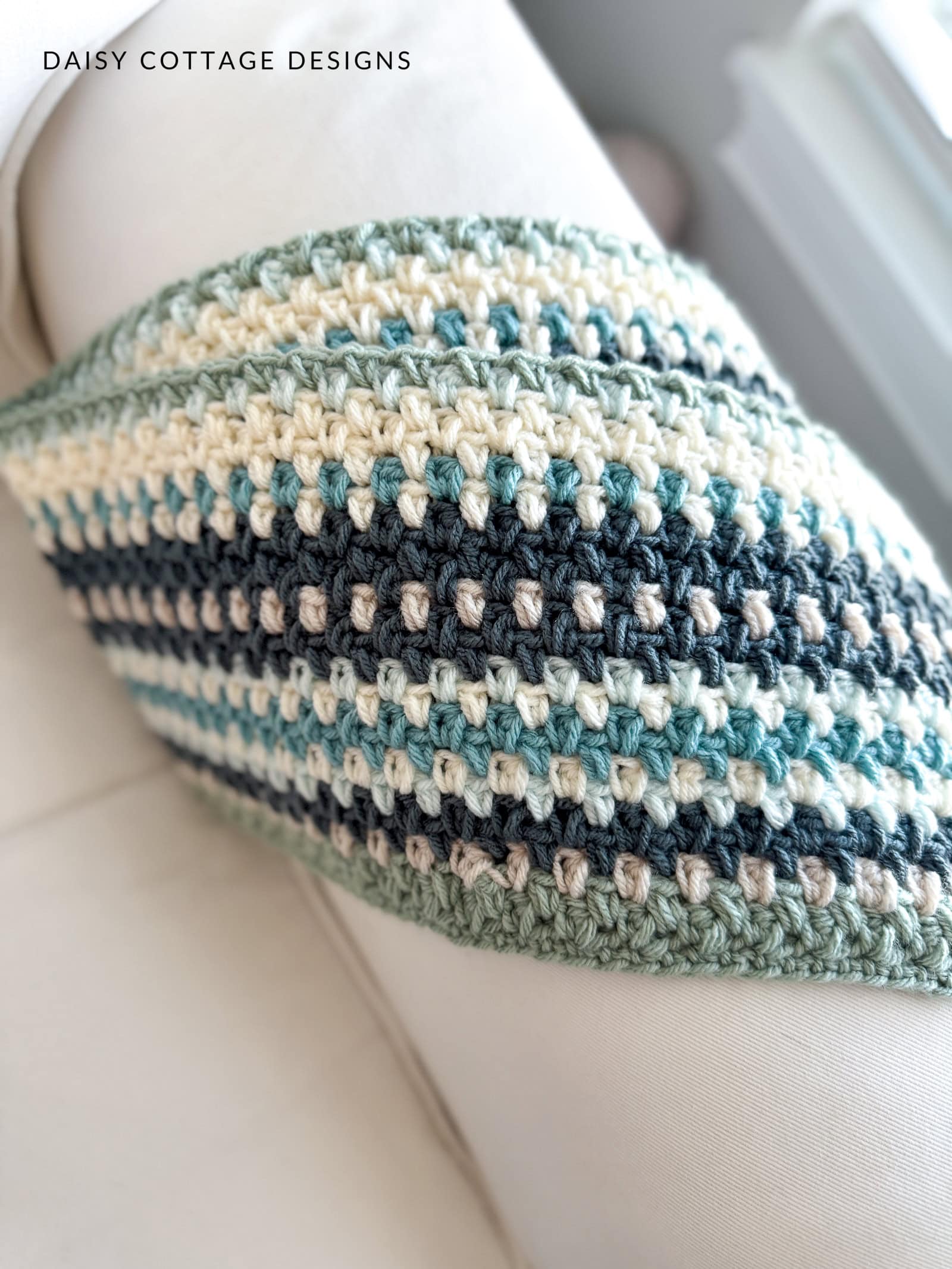
It’s January 27, and I have finished 2 years of my Anniversary Temperature Blanket. It’s neat how different the averages were between the two years.
I’m loving the way the colors are coming together, but I do wish I hadn’t chosen cream and Ivory. I think they’re a little too close to easily differentiate.

Ooh – I like this idea! I usually don’t do temperature blankets, but this one seems like it will look better (to me) than the others. I would like to steal your idea for the anniversary blanket. I have 23 years to research to see how many colors I will need. 🙂
I haven’t made that blanket yet. I’m curious though. But a bit confused on choosing colors for the temperature. By me it ranges from negative numbers in winter to high 90’s in summer
I do think that it’s a lot easier in an area where the weather is more temperate!
I’m making a temperature blanket for the year my husband passed. I know it’s kinda dark but that is what I feel is necessary.
Aw! I hope you love this blanket when it’s finished <3
Not at all interested. Personally I think it’s a great loss of time, money, energy. So many more interesting patterns (my opinion).
I made a temperature blanket last year (2024) using worsted weight yarn, one sc for each day, and an H hook. So, yes, I would’ve had 366 rows. It turned out soooo long that I stopped in July. I don’t know what I’ll do for Aug – Dec.
I’d like to do another one for 2025, but I need a better plan.
How are you only having 216 rows? My guess is that you’re not doing one row per day
Linda
No I have not but the idea is intriguing. I want to start one by using all the odds and ends in my basket.
I am making a temperature blanket, started November 5. I live in NY so I’m going to have a bunch of colors. It has been in the 20s here so I can’t wait for a “warmer” color.
My midwestern brain broke looking at that range of just 60-9+0…only 30 degrees of variation??? XD
I know, right?! It’s just averages. But I think we’ve only had one frost in the past few years 🙂
I love the look of your temperature blanket so far; the colours you have chosen are beautiful.
I am making one for my daughter-in-law and am currently researching the temperatures, and working out colours, stitches etc.
We are in Australia….
I also really like the stitch you have chosen. I am finding there are so many things to consider when working out a temperature blanket, it’s a bit like planning an adventure, very exciting.
This will be my first temperature blanket, so I hope it turns out…
Thank you for the inspiration : )
love the design will have to wait till i finished heartsblanket haha Heather
I’m considering making my first-ever temperature blanket this year, my first in VA, after 35+ years in NC. A temperature blanket project, that’s the plan.
I can’t wait to try this.
Love the colors! How do you know what the length of your blanket will be? My daughter is pregnant with my first grandbaby and I’m thinking of doing a temperature blanket – baby size – for each week of the pregnancy. A normal pregnancy is 40 weeks which will not be many rows so maybe I could do the high and the low for the week making it 80 rows. No idea how large that will be using this mini bean stitch. Any suggestions? What would you make your starting chain? Hoping to make it may 32″ by 36″
Hi, Marsha. A chain of 105 would give you a blanket approximately 33 inches wide. You’d probably need to make more like 100 rows to get to 36 inches, though. 🙂 That’s such a fun idea!
I had never heard of “a temperature blanket”. Thank you for sharing. I love the colors. You bring me a lot of inspiration. ❤️
I love the idea of a temperature blanket. I have been researching the idea for some time now but I am still unsure of it. Did you or are you going to do a tutorial on it? Thanks for all of the input you always give me. It’s much appreciated.
I might have to do that. I’ll add it to my list!
I thank you for the idea of making this blanket; for my son and daughter-in-law for their next anniversary.
I hope they love it, Bernice!
I’m making my first temp blanket, and I refuse to weave in all the ends! lol. I’ll either tassel the sides, or do an envelope border – have you tried one of those?
I haven’t! But, I should definitely consider it!
Hi I am making temperature blankets for 2023 (just decided it was a good challenge) I kept a spreadsheet of the temperature each day so I didn’t HAVE to do a row per day. I have a high temperature and a low temperature as I couldn’t decide haha. I also just finished one for my god daughter for her birth place and year. Very cool. I did an envelope edging so no ends to sew in. Have used moss stitch for all three and it ends up being a great size (roughly twin)
I’m going to have to consider the envelope border for sure!